

| HOME | JOIN | AUCTION
| NEWSLETTER
| EMAIL LISTS | LIBRARY
| ABOUT US | BYLAWS | LINKS ANNOUNCEMENTS |
Quentin Christianson, WINS #920 |
|
One fascinating area of numismatics many people avoid is that of Cast Chinese cash coins. I don't claim any expertise. I have read a little about these interesting coins and collected a few myself. I thought I would write a short piece to encourage other members to explore an interest in them also. Initially, my interest in Chinese cash coins was purely aesthetic. I liked the simple symmetric design of a round coin with a square hole and four symbols. I still do, but in collecting a few I've also learnt a lot more about them. A lot of people shy away from Chinese Cash coins because, to Western eyes, they are different. It's true that a monolingual English speaker like myself can't just pick one up and read the year and value on it. Yet, to me, that is part of the attraction. Coins, as we know them, have been used in China for well over 2,000 years. It didn't take long for them to develop production methods which resulted in consistent coins each time. Something much of the rest of the world struggled with until comparatively recently. This means it is possible to determine deliberate changes in coins rather than variation caused by poor quality control. Many Cash coins are available very cheap, especially compared to other coins of a similar age. While there are forgeries around, the same is true of most coins. As with other coins, look for a reputable dealer. Google "chinese coins reliable dealers" for a compiled page separating good and bad dealers. 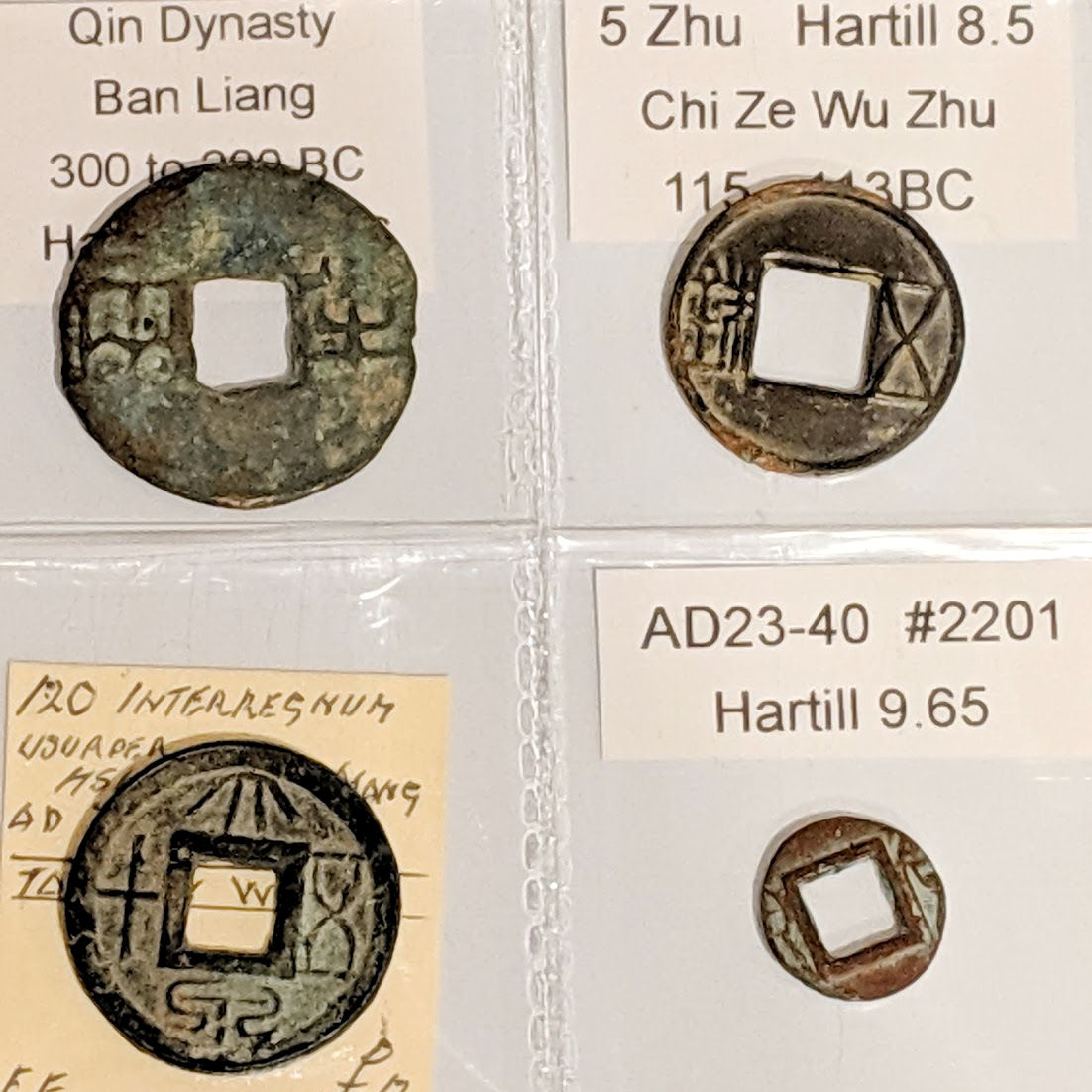
After cowrie shells, some of the earliest Chinese "coins" were "knife" and "spade" shaped. Genuine examples tend to be more expensive, so be wary of fakes. These evolved to the round coin with the square hole that was used for so long after. Wu Zhu coins were first issued in 118 BC and used for over seven hundred years. And people think compiling a set of US wheat cents by year is a challenge! In fact, very few Wu Zhu coins can be reliably attributed to a particular year or even period of time. The image above shows four "early" coins which range between 300BC and 40 AD. Note the bottom right coin was the inside "half" of a coin originally a similar size to the one above it. Some were cut, and some likely cast that way. The first Chinese cash coins I acquired were from a thousand years later. Although Cash coins were made up to the early 1900s, the Northern Song dynasty was the most prolific coin producing dynasty. The Northern Song dynasty lasted from 960 to 1127 AD. A wide variety of coins from this period are readily available. Because of this, they can be a good place for a new collector to start. 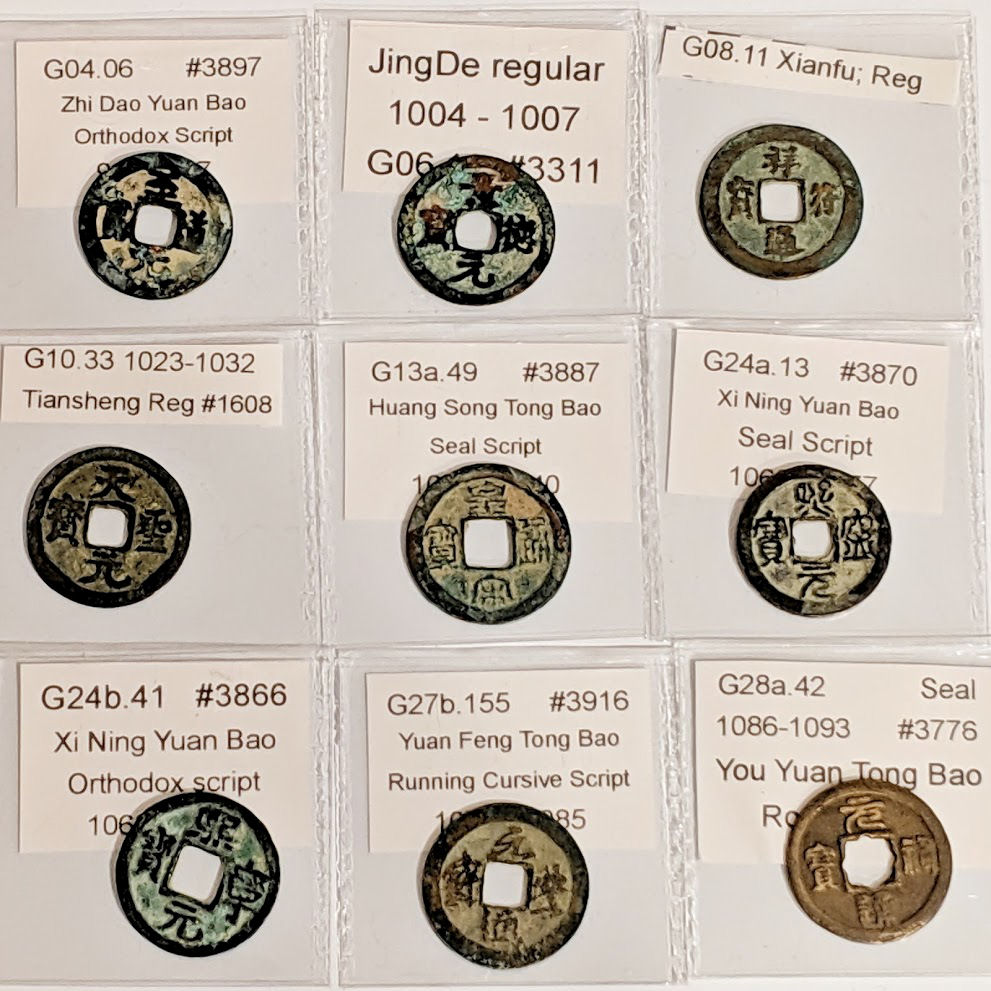
The reference I use for these, Northern Song Cash Variety Guide by Norman F Gorny lists 43 types. That is, 43 combinations of characters on the coins. Pictured above, are 9 different coins. There are also distinct variations between coins of the one variety. In some cases over 200 catalogued versions of one coin. Some with thick or thin writing, characters leaning one way or the other, or offset to one side of the coin or the other. As well as this, many coins were made in several scripts. In some ways that is like the difference between writing in block letters vs cursive. The image below shows two each of Huang Song Tong Bao, style 13a (Seal script) and 13b (Clerkly script). Cast between 1038 and 1040 AD during the fourth era of Emperor Renzong. Note the variation of the rims, thickness and position of the characters (touching the rim or hole). The bottom character particularly is quite different in the two styles of character. 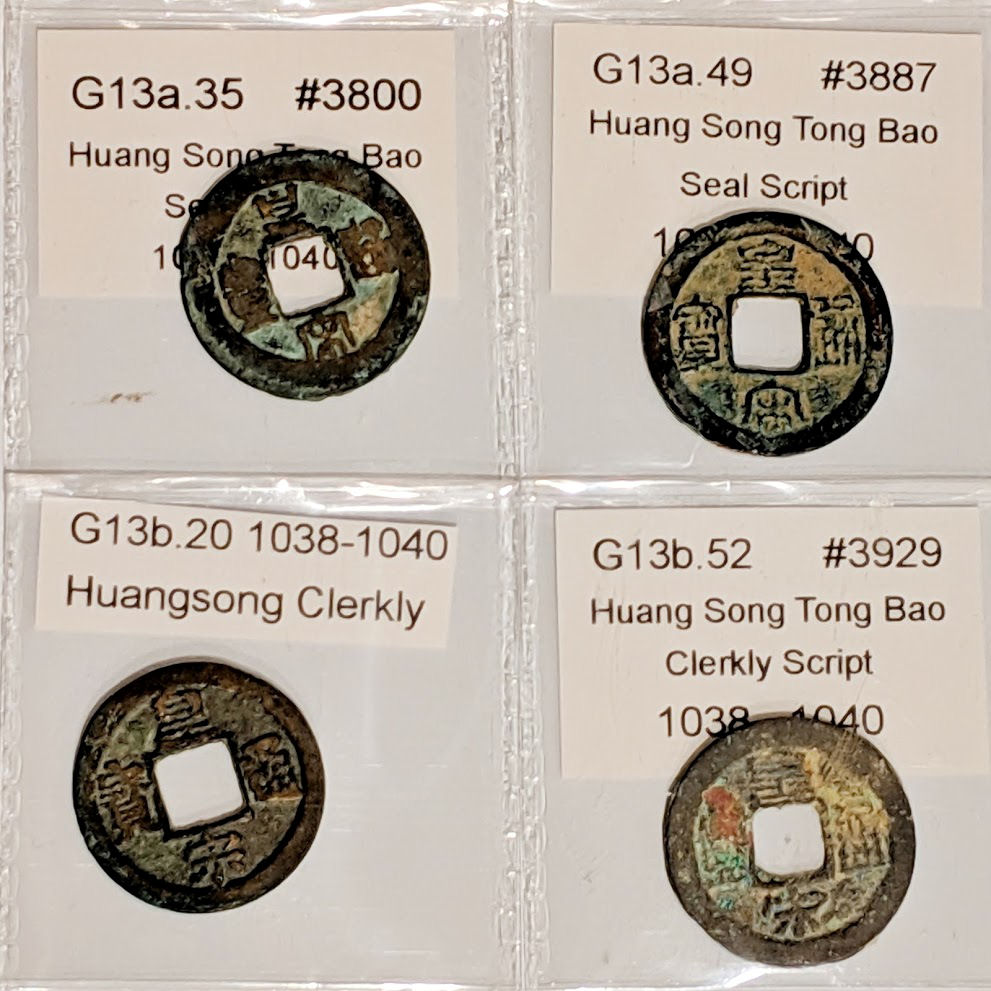
One feature of some varieties is that they were made as "Matching cash". Matching cash is where a coin is made in varieties of two (or three) types of scripts, and pairs can be found. Where the style of one script matches the style of the same coin in another script. To be honest, I struggle to categorise most of my coins as being the 231st version of a style vs the 232nd, let alone matching cash. Gorny's reference has rubbings of each coin and an explanation of what to look for, which makes it much easier. If you don't want to study each coin so deeply, Cast Chinese Cash by David Hartill lists the main varieties and variations. High quality production meant variations are attributable as deliberate rather than sloppy manufacturing. It is believed that variations were from different mints. Some variants may have been for celebrations, commemoration or for other reasons. Unfortunately, no record remains to decipher these. Variations include the square hole rotated by either 20, or 45 degrees. Some have holes punched twice, at normal and at 45 degrees making a "rosette" hole. The image below shows left to right, a coin with Rosette hole, a coin with a "tilted punch", and the reverse of a coin with a "slipped reverse mould". The coin in the middle is also larger. Where all the other Northern Song coins I have pictured are worth "1 Cash", this coin is worth "2 cash". While 1 cash is the most common, coins of 5, 10, 50, 100 and up to 1,000 cash exist. (1,000 cash coins are around 60-65mm diameter). 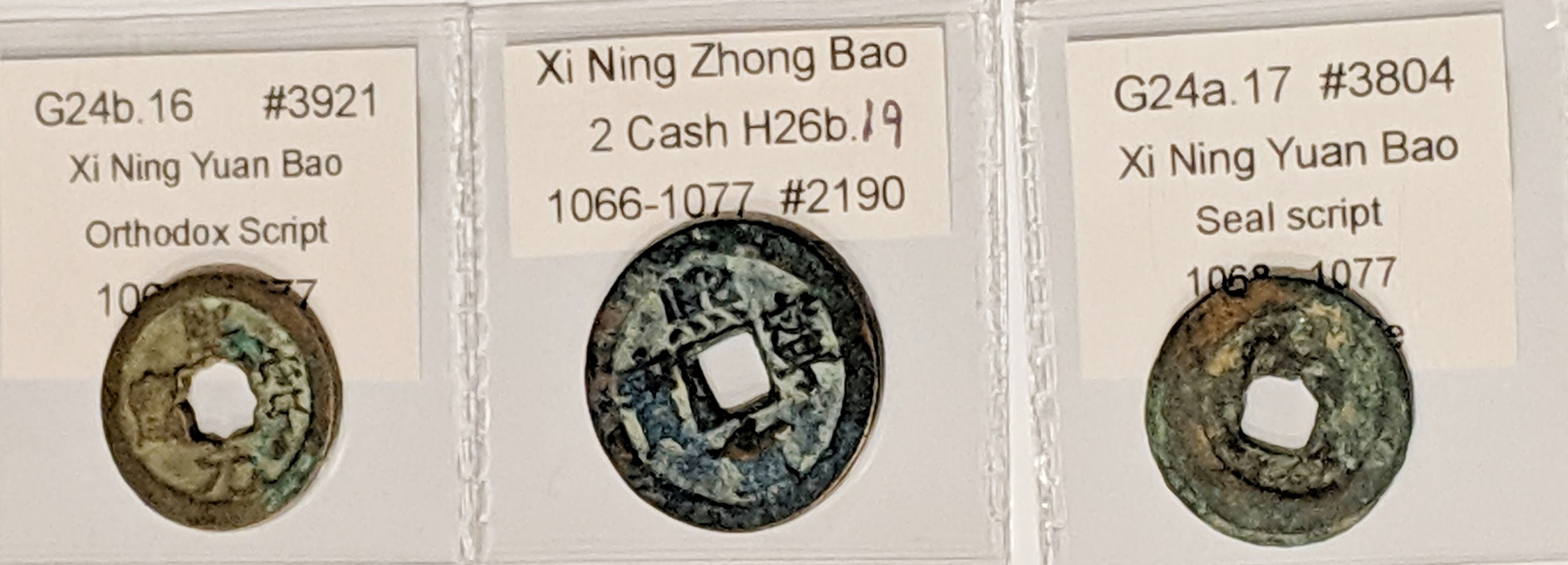
Finally, many Asian countries either imported or copied Chinese style Cash coins. My final image shows:
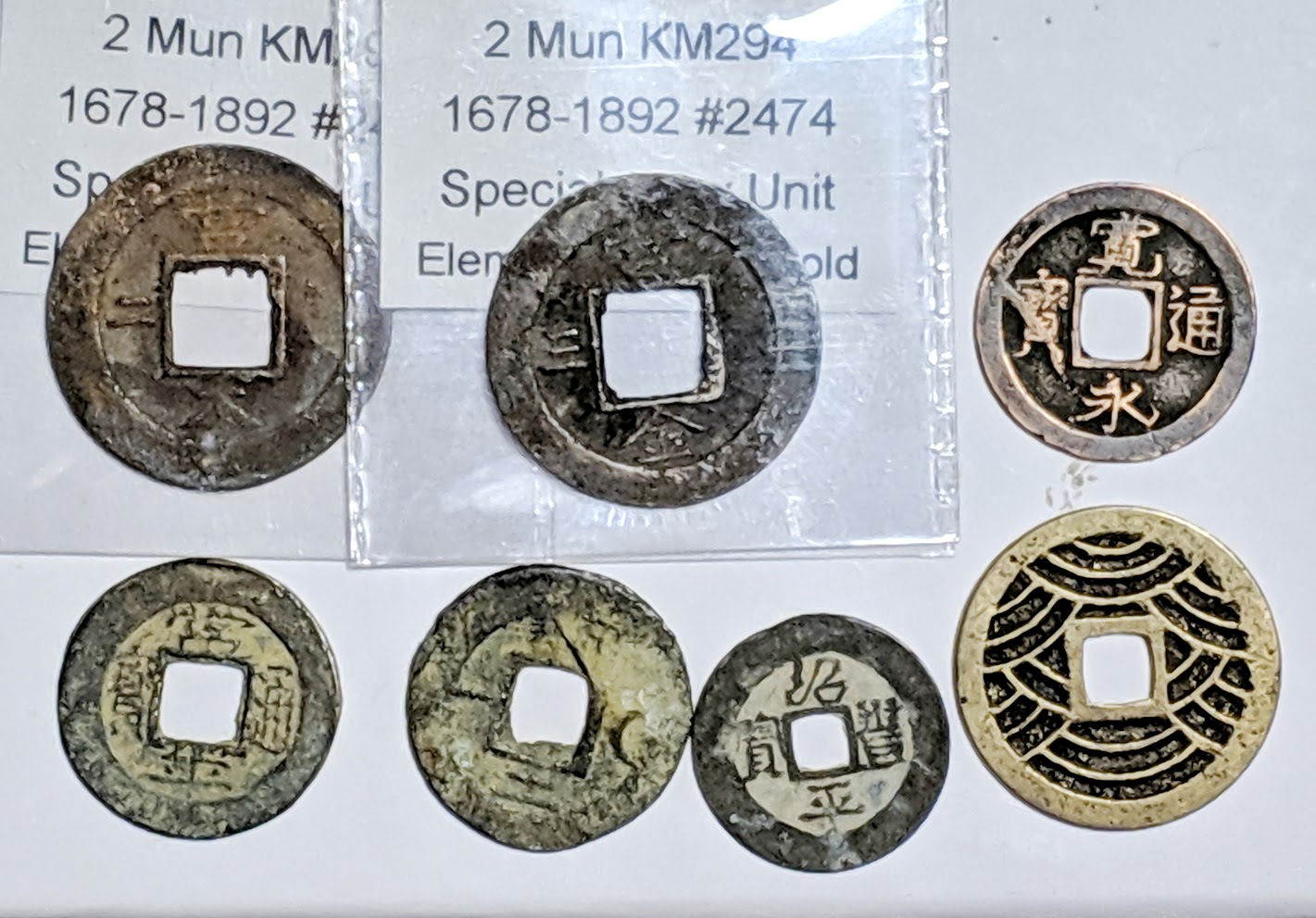
So, there is plenty of variety and interesting things to look for. There is also an increasing number of resources available to help identify cast cash |
| Information
contained on this page is posted for WINS Club Members use. If you have any comments or problems with this or any other Club Site page, please contact the: Operations Admin. Copyright © 2019 All Rights Reserved. Legal Notices |